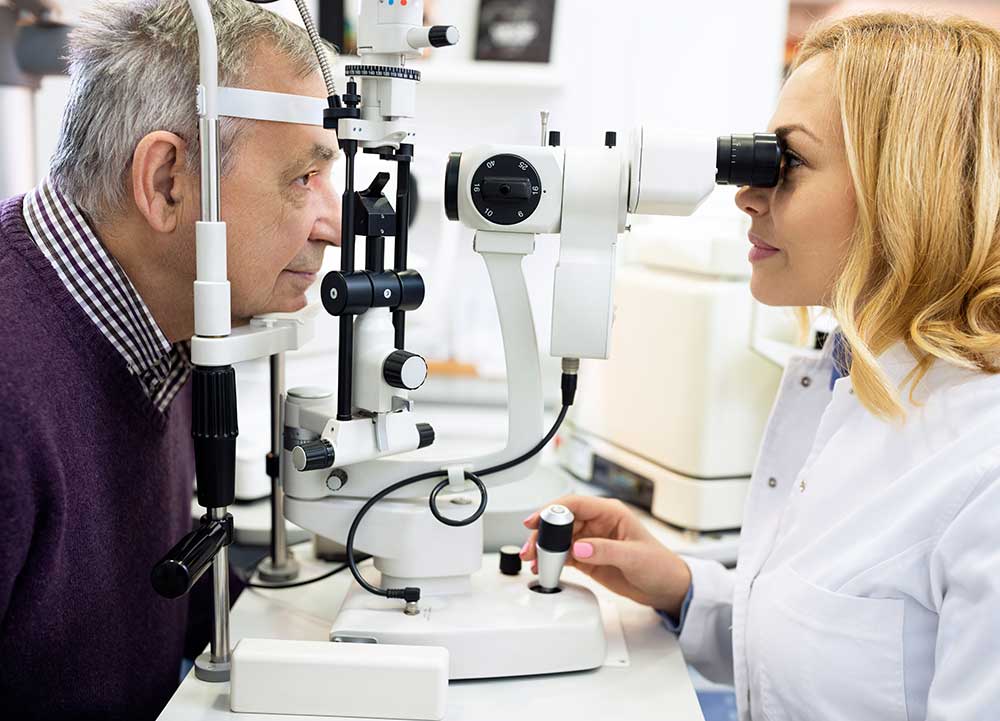Experience Personalized Treatment with Opticore Optometry in Chino
Experience Personalized Treatment with Opticore Optometry in Chino
Blog Article
Exploring the most up to date Technical Innovations in Optometry and What They Mean for Optometrists
From the accuracy of Optical Comprehensibility Tomography to the nuanced understandings used by AI-driven diagnostic tools, these innovations are establishing brand-new requirements in patient evaluation and therapy. As these improvements permeate the method, optometrists are faced with the challenge of embracing these tools to enhance individual end results.
Developments in Diagnostic Devices
Progressing the area of optometry, advancements in diagnostic tools have revolutionized the means eye care experts assess and detect eye conditions and aesthetic impairments. The previous decade has witnessed considerable technological innovations, making it possible for even more accurate and comprehensive evaluations. Optical Comprehensibility Tomography (OCT), for instance, provides high-resolution cross-sectional pictures of the retina, permitting the early discovery of diseases such as glaucoma and age-related macular deterioration. This non-invasive imaging technique has ended up being important in contemporary optometric technique.
An additional secret technology is the introduction of innovative corneal topography systems, which map the surface area curvature of the cornea with precision. These tools are specifically helpful for suitable call lenses and identifying corneal conditions. Electronic retinal imaging has changed standard ophthalmoscopy, using in-depth, breathtaking sights of the retina that facilitate extensive visual evaluations.
The development of wavefront aberrometry has actually additionally been vital, making it possible for the analysis of refractive errors with unequaled accuracy (Eye Doctor). This innovation aids in personalizing restorative lenses and boosting surgical results for refractive surgical treatments. Jointly, these diagnostic developments equip optometrists to deliver remarkable individual treatment, guaranteeing early intervention and tailored treatment techniques, eventually enhancing visual wellness results
AI in Individual Management
Building on the foundation of advanced diagnostic tools, the consolidation of man-made intelligence (AI) in person management stands for a transformative leap for optometry. AI systems are progressively used to boost effectiveness, accuracy, and personalization in individual treatment.
In addition, AI-driven platforms help with structured person communications and administrative processes. Automated organizing, virtual assessments, and customized follow-up strategies not only boost patient fulfillment but also maximize time administration for practitioners. These systems can triage clients based on the necessity of their conditions, guaranteeing that those in important requirement receive punctual attention.
In addition, AI boosts decision-making by providing optometrists with evidence-based recommendations and therapy paths. By integrating information from electronic health and wellness records, AI tools supply insights that inform scientific choices, lowering the threat of mistakes and boosting client outcomes. As AI continues to advance, its duty in individual management will likely expand, reshaping the landscape of optometric care.
Breakthroughs in Retinal Imaging
In the world of optometry, retinal imaging has actually witnessed impressive technological innovations that are enhancing diagnostic abilities and client treatment. Technologies such as Optical Coherence Tomography (OCT) and fundus photography have revolutionized how optometrists examine the retina and envision. OCT, specifically, offers high-resolution, cross-sectional photos of the retina, permitting the thorough examination of its layers. This capability is invaluable for early discovery and management of problems like glaucoma, diabetic retinopathy, and age-related macular degeneration.
Boosted imaging methods like OCT angiography are more refining analysis accuracy. Eye Doctor. Such developments assist in the identification of min retinal modifications that can signify disease development.
Additionally, advancements in artificial knowledge are enhancing retinal imaging by making it possible for automatic analysis of large datasets. These systems assist eye doctors in determining patterns a measure of pathology, therefore enhancing analysis accuracy and effectiveness. Collectively, these developments are changing retinal imaging into a cornerstone of modern eye treatment, enhancing outcomes and increasing therapeutic possibilities.
Teleoptometry's Growing Role
Teleoptometry is increasingly coming to be an important part of eye care, driven by innovations in digital interaction and diagnostic devices. As optometry accepts electronic transformation, teleoptometry helps with remote consultations, allowing optometrists to extend their solutions beyond typical boundaries. This is especially valuable in underserved and rural areas where access to specialized eye care is frequently restricted. By leveraging high-resolution video clip conferencing and progressed retinal imaging, optometrists can perform thorough eye tests from afar, making sure timely medical diagnosis and therapy.
The assimilation of artificial knowledge (AI) additional boosts teleoptometry, enabling the evaluation of aesthetic data and aiding in the discovery of eye conditions such as glaucoma and diabetic person retinopathy. AI-powered formulas can quickly analyze complex imaging information, offering optometrists with valuable understandings that boost medical decision-making.
Moreover, teleoptometry sustains connection of treatment with seamless integration with digital health records (EHRs), permitting optometrists to maintain extensive patient backgrounds. try here This ensures that people receive individualized and consistent treatment even when seeking advice from various practitioners.
Despite these benefits, difficulties continue to be, consisting of making certain information safety and security and managing client assumptions. However, teleoptometry represents a considerable stride towards more obtainable, effective, and patient-centered eye treatment. As innovation evolves, its role is poised to expand even more.

Future Patterns in Eye Treatment
A myriad of innovative fads is established to improve the future of eye care, driven by technological advancements and the evolving demands of individuals. One significant trend is the combination of artificial knowledge (AI) in diagnostics, which promises to boost the accuracy and effectiveness of eye exams. AI algorithms can examine huge quantities of data from retinal pictures, potentially identifying conditions like diabetic retinopathy and glaucoma earlier than conventional approaches.
Furthermore, tailored medication is obtaining grip in optometry, with hereditary testing notifying personalized therapy strategies. This technique aims to enhance person outcomes by tailoring interventions to individual hereditary profiles. Wearable technology, such as smart get in touch with lenses, is additionally coming up, supplying real-time surveillance of intraocular stress or glucose degrees, thus giving continual understandings into systemic and eye health and wellness.
The adoption of enhanced fact (AR) and virtual fact (VIRTUAL REALITY) in training and individual education and learning is an additional emerging fad. These modern technologies supply immersive experiences that can enhance understanding and abilities both for eye doctors and individuals. As these fads develop, optometrists should remain abreast of technological developments to supply innovative care, making certain better person end results and fulfillment in the dynamic landscape of eye care.
Verdict

Collectively, these analysis developments empower eye doctors to provide premium client care, ensuring early more tips here intervention and tailored therapy methods, eventually improving visual health and wellness outcomes.

As these technologies continue to progress, optometrists must adjust and integrate them right into method, inevitably enhancing workflow performance and boosting the requirement of eye treatment delivered to clients.
Report this page